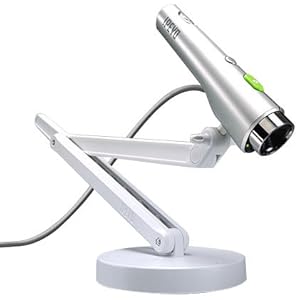
This is an Ipevo P2V (point to view). It is about the size of a water bottle and can perform all the functions that bigger, clunkier versions do while being easily transportable. This chapter will cover ways in which these handy tools can be used in teaching situations.
Here are some videos and quotes on how others use document cameras. Though these focus on the elementary level, you can do many of the same things with more advanced content in the upper levels.
Quote from experience:
We piloted them in a first grade classroom to assist with an autistic student. He was very visual and it really engaged him in the learning process. We also found it really engaged all of the students. Our digital natives are extremely visual learners. We subsequently added document cameras to all of our elementary classrooms and they are a great hit with students and teachers alike. If engagement is what you're after...document cameras make a significant difference for the little ones.
More Uses
You can use document cameras to do the following things (and more):- Make every book a big book- increase text size for shared reading experience
- Zoom in on an object for close inspection (enhanced views)
- Record screencasts of demonstrations or student performance using programs like Jing or Screencast'o'matic
- Take photos of sample work, make copies to give to struggling students
- Student can show and explain work to group and receive feedback
- Take pictures of student work (or stages of it) and save it for later viewing
- Capture images of physical representation of learning (poses, models, etc.)
- Practice speaking/ presenting and view what it looks like on screen
- Conduct Skype calls and video conferences on sites like liveminutes to converse with/ present to others (group or individual)
No comments:
Post a Comment